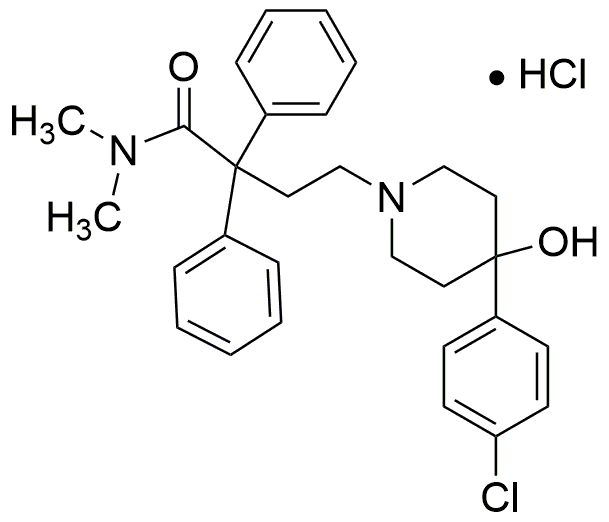Loperamide hydrochloride is widely utilized in research focused on:
- Diarrhea Treatment: This compound is primarily used as an over-the-counter medication to manage acute and chronic diarrhea, providing relief by slowing down gut movement.
- Pharmaceutical Development: It serves as a key ingredient in formulations aimed at developing new gastrointestinal therapies, allowing researchers to explore enhanced efficacy and safety profiles.
- Clinical Research: Loperamide hydrochloride is often studied in clinical trials to evaluate its effects on various gastrointestinal disorders, helping to establish better treatment protocols.
- Formulation Science: In the pharmaceutical industry, it is used in the development of controlled-release formulations, which can improve patient compliance by reducing dosing frequency.
- Veterinary Medicine: This compound is also applied in veterinary practices for managing diarrhea in animals, showcasing its versatility across different fields of medicine.
General Information
Properties
Safety and Regulations
Applications
Loperamide hydrochloride is widely utilized in research focused on:
- Diarrhea Treatment: This compound is primarily used as an over-the-counter medication to manage acute and chronic diarrhea, providing relief by slowing down gut movement.
- Pharmaceutical Development: It serves as a key ingredient in formulations aimed at developing new gastrointestinal therapies, allowing researchers to explore enhanced efficacy and safety profiles.
- Clinical Research: Loperamide hydrochloride is often studied in clinical trials to evaluate its effects on various gastrointestinal disorders, helping to establish better treatment protocols.
- Formulation Science: In the pharmaceutical industry, it is used in the development of controlled-release formulations, which can improve patient compliance by reducing dosing frequency.
- Veterinary Medicine: This compound is also applied in veterinary practices for managing diarrhea in animals, showcasing its versatility across different fields of medicine.
Documents
Safety Data Sheets (SDS)
The SDS provides comprehensive safety information on handling, storage, and disposal of the product.
Product Specification (PS)
The PS provides a comprehensive breakdown of the product’s properties, including chemical composition, physical state, purity, and storage requirements. It also details acceptable quality ranges and the product's intended applications.
Certificates of Analysis (COA)
Search for Certificates of Analysis (COA) by entering the products Lot Number. Lot and Batch Numbers can be found on a product’s label following the words ‘Lot’ or ‘Batch’.
*Catalog Number
*Lot Number
Certificates Of Origin (COO)
This COO confirms the country where the product was manufactured, and also details the materials and components used in it and whether it is derived from natural, synthetic, or other specific sources. This certificate may be required for customs, trade, and regulatory compliance.
*Catalog Number
*Lot Number
Safety Data Sheets (SDS)
The SDS provides comprehensive safety information on handling, storage, and disposal of the product.
DownloadProduct Specification (PS)
The PS provides a comprehensive breakdown of the product’s properties, including chemical composition, physical state, purity, and storage requirements. It also details acceptable quality ranges and the product's intended applications.
DownloadCertificates of Analysis (COA)
Search for Certificates of Analysis (COA) by entering the products Lot Number. Lot and Batch Numbers can be found on a product’s label following the words ‘Lot’ or ‘Batch’.
*Catalog Number
*Lot Number
Certificates Of Origin (COO)
This COO confirms the country where the product was manufactured, and also details the materials and components used in it and whether it is derived from natural, synthetic, or other specific sources. This certificate may be required for customs, trade, and regulatory compliance.


